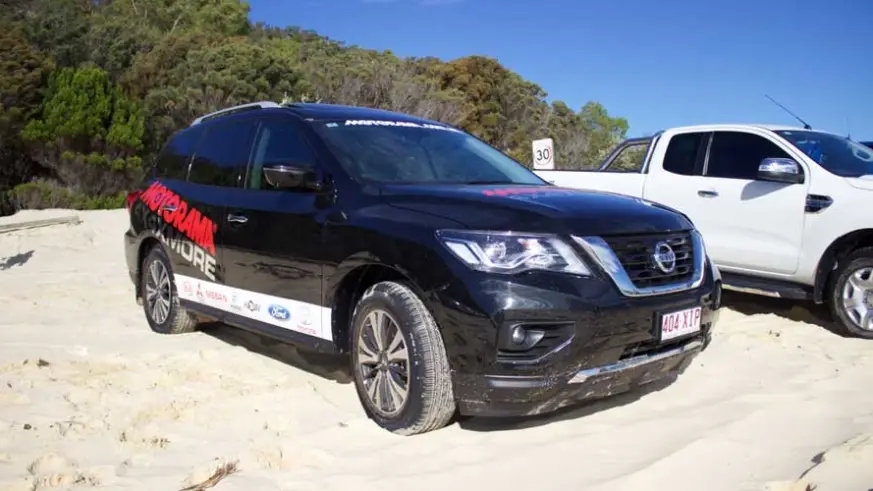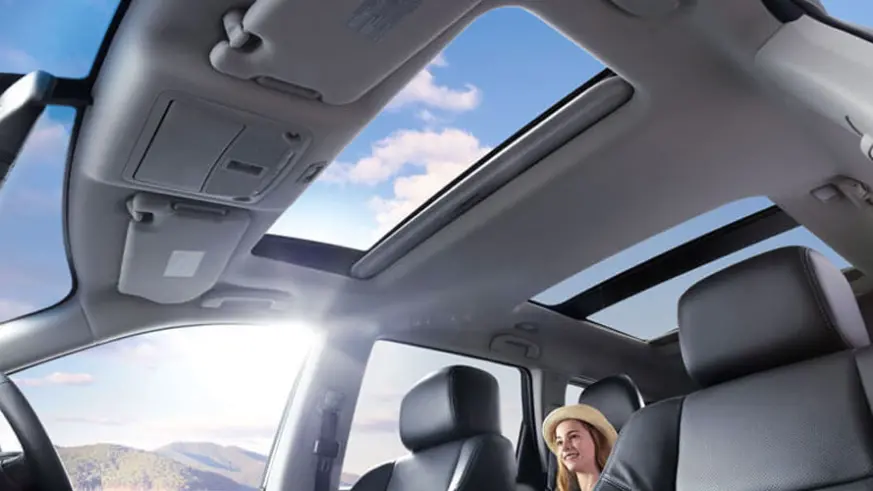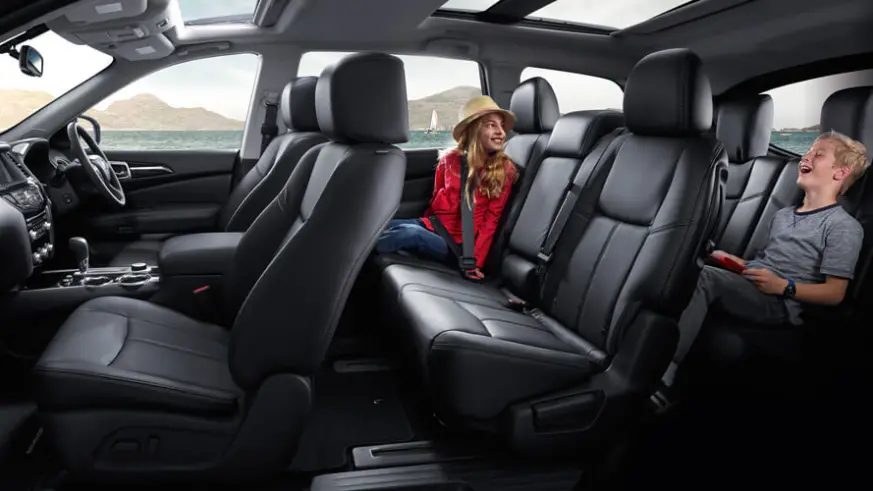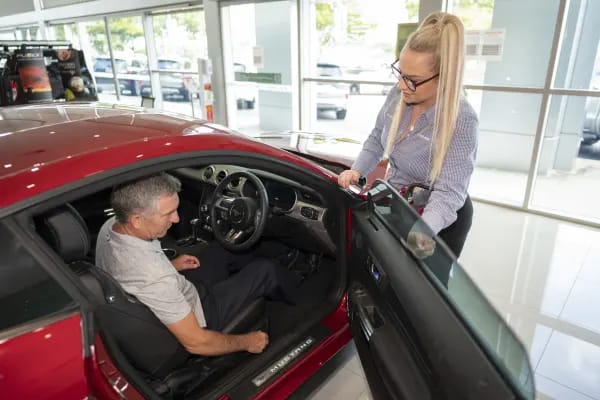
Review: 2017 Nissan Pathfinder
Posted in Vehicle Reviews
Review: 2017 Nissan Pathfinder
- Comfortable, spacious interior
- V6 grunt
- More capable than most AWD SUVs
Cons
- No diesel option (and accompanying petrol thirst)
- Not really a off-road vehicle
The Nissan Pathfinder is one of the many SUVs that make up the Nissan range, the penultimate before the flagship Patrol – and one of the only hybrid 4WD SUVs available to buy in Australia.
We got off-road in the Pathfinder on Moreton Island to test it out.
INITIAL IMPRESSION
The original Pathfinder started out competing with rugged off-roaders based on utes – first, models like the Toyota Hilux Surf and Mitsubishi Challenger, before settling into a niche as a part-time off-roader marketed to families like the Toyota Prado and Holden Jackaroo.
Then, the engineers at Nissan got restless again and decided to reinvent the Pathfinder as a three-row crossover for the current generation to tackle SUVs that had AWD capability, but were likely to never see more than a dirt track (see under: Toyota Kluger, Kia Sorento, Mitsubishi Outlander.)

DRIVEABILITY
Now, the Pathfinder has become a massive beast, sitting at over 5m in length – longer than a LandCruiser 200 and near enough to be as wide. But, at the same time, it doesn’t feel it. The Nissan boffins have worked really hard to create a car-like driving experience, and that’s a triumph in the Pathfinder.
It certainly doesn’t feel like a lumbering seven seat wagon when you’re on a tear up the highway, or even just slinging it around at suburban speeds; it’s smooth and responsive, easy to manoeuvre and kept moving along with a punchy V6 engine.
The Pathfinder still retains its pretensions of off-road ability through the ‘ALL-MODE 4WD-i’ system that has an electronically selectable mode of 2WD (its default setting), 4WD (in reality, a part-time AWD system) and the ability to lock the rear differential to send power to all four wheels off-road. It’s not going to outpace something like a LandCruiser in the bush, but it certainly has a lot more capability built in than many pretend wagons that sell the idea of an outdoor lifestyle without having the nuts and bolts to back it up.
Hitting the trails in the Pathfinder, the locking 4WD system works well, combining with the V6 petrol engine to deliver a powerful family hauler that can be capable on the road, while still offering enough grunt to pull through a few tricky off-road situations.
The lack of ground clearance becomes a problem on the beach, as I soon found out when I unwisely slowed before a climb up the slightest gradient. The Pathfinder’s sagging belly beached itself on the soft sand, while its wheels sank into the grooves left by other 4WDs that had managed to make it on to higher ground.

LIVEABILITY
As a seven-seat mode of family transport, the Pathfinder can’t have it both ways. You can have a comfortable, pretty powerful wagon that promises spaciousness for all passengers, or you can have a refined off-roader to comfortably accommodate four to five passengers plus gear.
Have a boat or a caravan that sees use on the school holidays? Get a Pathfinder, the standard ‘Tow Mode’ button helps with engine braking and rejigging the gear ratios in the CVT auto to ensure smooth acceleration on the road. Want a hybrid? Yes, you can certainly have that (even as a 4WD version, although that’s even heavier still than the regular Pathfinder with a battery pack on board.)
The interior is comfortable and spacious, especially in the ST-L and range-topping Ti modes, which cop full leather everything, dual sunroofs (including a panoramic roof) to open up the cabin to the world and the big safety add-ons like Rear Cross Traffic Alert, Intelligent Emergency Braking with Forward Collision Warning, Blind Spot Warning et al.There are small grumbles, though.
Connecting to the Bluetooth system to play music with a smartphone is far more difficult than it needs to be, partly because Nissan kept the software in-house with a proprietary system that is nowhere near as smooth as some systems. By default, it connects to your phone as a Bluetooth device, unpairing the audio player at its convenience – which is a pain. Maybe, a sole audio player would fare better pairing to Bluetooth, but with everyone keeping his or her smartphones at hand it’s a frustrating experience.
There are also far too many buttons on the central console. Controlling audio or climate control is easily at hand, but the busy nature of having the clusters of eight to twelve buttons and switches means that you have to take your eyes off the road to locate the function you need, whether it’s shutting off the rear vents, changing to recirculated air or switching screens from audio to navigation.
Those are two thorns on the rose of an infotainment system – the satellite navigation is practical, easy-to-read and provides useful information such as warning of upcoming speed cameras, while the touchscreen is nicely responsive and works well in tandem with the multi-function screen in the instrument gauges (which can switch between telling you your tyre pressures to the song currently playing.)

COST
The Pathfinder starts at $41,990 for the entry model ST in two-wheel drive guise, all the way up to the Ti Hybrid 4WD for $69,190. The petrol ST-L 4WD, as tested, is available for $57,690. All prices are before statutory and on-road costs such as dealer delivery, registration or insurance.
All colours except Ivory Pearl (white) and Diamond Black are an additional cost.
Scheduled servicing for the Pathfinder is set at every 12 months/10,000km for the regular petrol model and every 6 months/7,000km for hybrid models.
myNissan Service Certainty offers capped price servicing set between $289 and $413 for the petrol Pathfinder, rising to $719 for the tenth service around 100,000km. The hybrid Pathfinder has shorter service intervals, set between $274 and $485. Prices vary between 2WD and 4WD models, with 4WD models slightly higher due to the greater incidence of wear on components.
CONCLUSION
The Pathfinder has certainly changed since it was first dreamed up at Nissan headquarters, from a rugged 4WD to its current crossover form to keep up with the times.
One of the bigger successes afforded to the Pathfinder is the development of its drivetrain to deliver a genuinely sharp driving performance, masking a large family wagon that has potential to go off-road, but is equally at home as a long-haul tourer.



